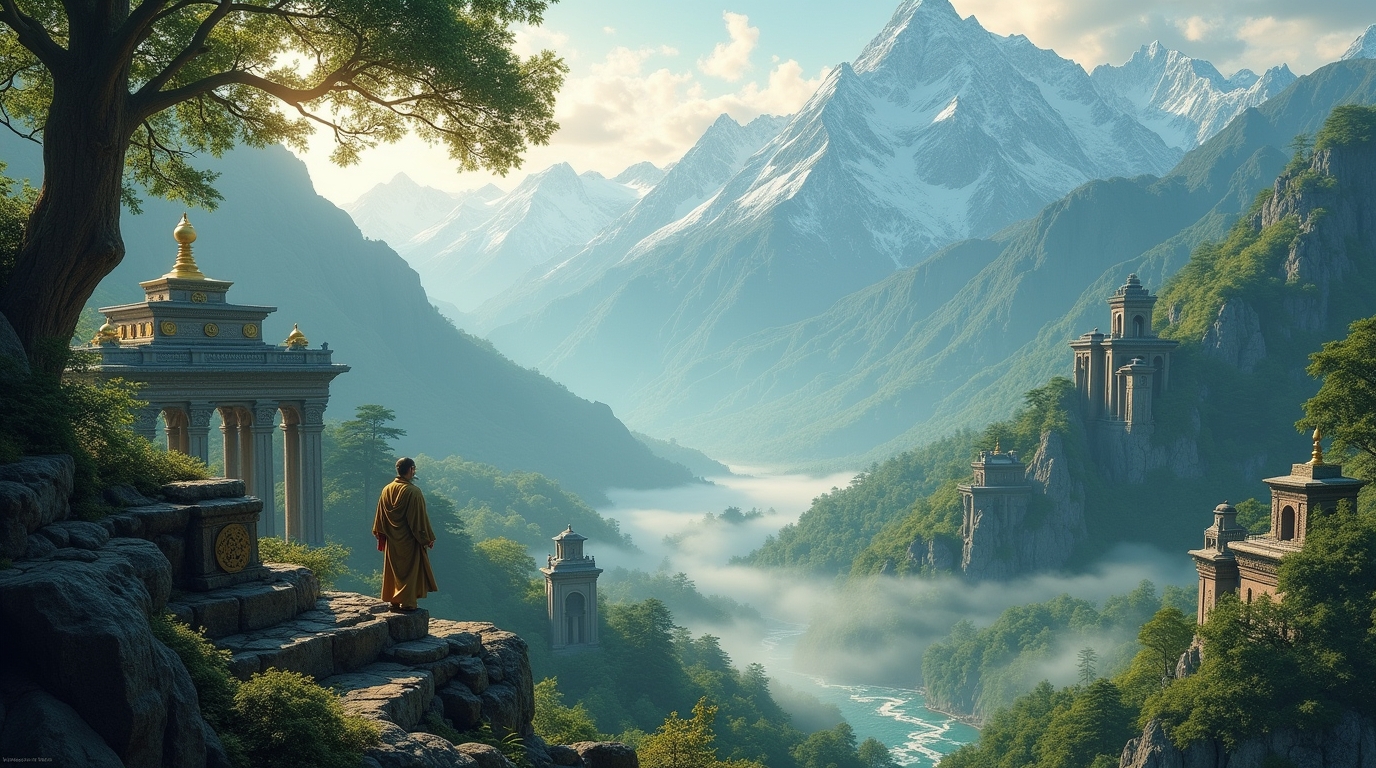For centuries Shambhala or Shangri-La, a mystical kingdom tucked away somewhere in the frozen silence of the Himalayas, has captured the imagination as an out-of-reach, hidden paradise.
Said to be a land of enlightened beings, where peace, prosperity, and wisdom co-exist— untouched by time, corruption, or suffering, the ‘jewelled land’ has fascinated spiritual seekers, academic scholars, and mystics for good reason.
At the crossroads of myth, religion, and human longing for a perfect world, a hidden truth, or ultimate enlightenment, the place sparks eternal curiosity.
Stories revolve around secret valleys in Tibet, Bhutan, or even deep within Mongolia or Siberia. Some modern theorists even associate Shambhala with extraterrestrials and ideas of lost ancient technologies.
According to legends, the rulers of Shambhala are masters of superior spiritual technologies, occult sciences, and deep meditation techniques.
The esoteric traditions such as Theosophy claim in Shambhala that ascended Masters — highly evolved souls who have transcended ordinary human limitations — guide human beings from behind the scenes.
Religions such as Hinduism, Tibetan Buddhism, Mongolian shamanism, and even Russian mysticism give different versions of Shambhala.
Let’s dive deep into the mystery of Shambhala — navigating through sacred texts, secret maps, and strange testimonies — to uncover if the hidden kingdom in the Himalayas is real or just a myth.
Shambhala, The Land of Peace
Kalachakra Tantra, one of the most esoteric and secretive teachings of Tibetan Buddhism, mentioned the name Shambhala (also spelled Shambala or Shangri-La).
Shambhala remains a hidden paradise — not for everybody’s reach. It is a realm of only the pure-hearted, who can enter, having shielded themselves from the outside world’s corruption.
According to the Kalachakra texts, Shambhala is a kingdom of enlightened beings and is ruled by kings who preserved the wisdom to guide humanity to tower over darkness.
Other versions even suggest Shambhala is accessible to seekers through deep spiritual practice hidden in a secret dimension accessible only through deep spiritual practice.
Shambhala Route Remains Puzzle
Ancient Tibetan maps, preserved in monasteries, mentioned the possible geographic location of Shambhala. They point towards India’s north, beyond icy peaks and big deserts. The route suggests areas near the current borders of Tibet, Bhutan, and parts of the Himalayas.
A group of explorers, monks, and thrill seekers scouted through rugged and hostile terrains in search of the kingdom:
- French explorer, Alexandra David-Néel spoke about “hidden lamaseries” that guard the path to Shambhala.
- Russian mystic, Nicholas Roerich, carried out expeditions through Central Asia. Roerich was convinced he had seen signs of Shambhala’s hidden entrance.
- Hindus in India often speak of Gyanganj or Siddhashram, which is another name for Shambhala which is believed to be protected by divine forces.
A question of eternal interest is often asked. Is Shambhala a physical place hidden by the Himalayan wilderness or a metaphysical realm beyond human perception?
Spiritual Symbolism
Buddhist philosophers say Shambhala represents more than just a place. It is a state of consciousness, a hidden purity within the human soul.
According to Kalachakra Tantra, when the world descends into turmoil in the dark ages, Rudra Chakrin, the future King of Shambhala, will emerge and defeat the darkness to restore peace.
This theory has given birth to powerful spiritual metaphors:
- Shambhala is Not Physical But an Inner Kingdom: To attain Shambhala, one has to attain enlightenment — hidden within every seeker.
- The Cosmic War: A cosmic war is on between wisdom and ignorance.
Western Fascination About Shambhala
In 1933, British author James Hilton introduced the fictional paradise of Shangri-La in his Lost Horizon. He described it as a peaceful, ageless place hidden in the Tibetan mountains.
Shambhala is borrowed heavily from real Shambhala legends. It sparks global curiosity. From Hollywood films to New Age writings, Shambhala was projected as a symbol of:
- Secret wisdom
- Inner peace
- Survival of ancient knowledge
Clues Hidden in Ancient Indian Lore?
Hindu mythology also mentions similar hidden realms. Puranic texts talk about Siddhashrams, the dwelling place of saints where the time zone is different and knowledge is preserved for humanity.
According to some scholars, Shambhala could be connected to Indian legends:
- Mount Meru, a cosmic mountain, is often associated with the hidden realm.
- Gyan Ganj, a mythical city in the Himalayas, mystically matches with Shambhala.
Is it possible that the real place transcended religious and national boundaries?
Modern Expeditions and Unexplained Mystery
Explorers occasionally step into remote Himalayan regions chasing whispers of lost valleys. They experience weird occurrences:
- Sudden weather changes
- Electromagnetic readings near unexplored mountain passes.
- Locals keep mum when asked about hidden valleys.
Buddhist monks believe that the entrance to Shambhala exists and it is protected by supernatural forces.
Final Thoughts: Myth, Reality, or Metaphor?
Is Shambhala a literal hidden kingdom in the Himalayas?
Is it a spiritual state of enlightenment, accessible only through inner transformation?
Or is it a blend of both — a real place hidden by divine design until a future yet to come?
The legend of Shambhala continues to attract seekers, scholars, mystics, and wanderers.
FAQs About Shambhala
Where is Shambhala situated?
According to ancient, Shambhala lies hidden somewhere in the Himalayas, maybe beyond Tibet and Bhutan.
Is Shambhala real ?
Some believe it is a literal hidden kingdom. Others describe it as a metaphor for spiritual awakening.
What is the spiritual significance of Shambhala?
Shambhala means inner enlightenment, purity of soul, and the promise of a golden age.
